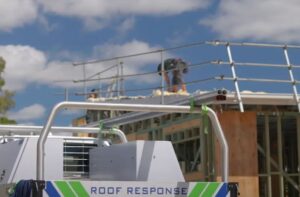Analyzing the voyuor house Phenomenon: Divulging Effects and Privacy Concerns
In the endlessly improving field of technology, the advent of innovative gadgets and innovations typically steers us down curious and from time to time, touchy directions. A particular notion that has earned interest is the “reallifecfam.” This term comprises a technical evolution that raises a variety of questions regarding privacy, morals, and social boundaries. In this piece, we analyze the reallifecam cam situation, delving into its effects and exposing the concerns it awakens.
Making sense of the voyeur house
The label “voyeur house” promptly calls forth images of sneaky monitoring and discrete observation. A voyeur house tv refers to a tiny, low-key camera developed to snatch unfiltered moments, oftentimes not having the knowledge or approval of the individuals being recorded. These cameras can be camouflaged in day-to-day articles, making them hard to locate, and they might stream recordings to different locations, providing an inconspicuous perspective to the spectator.
A Modification in Perspective: From Discretion to Breach
While technical achievements have undoubtedly improved our lifestyle, they’ve also led to signifying changes in the limits of privacy. The advent of the reallifecam cam has instigated a new level to the constant discussion in reference to surveillance and approval. Individuals, oblivious of being captured, become unknowing players in an unapproved stage of their lives, raising moral concerns dealing with the violation of intimacy and control.
Virtues in Question: Approval and Accountability
One of the core unease bordering the voyue house current is the nonexistence of informed permission. Consent assembles the foundation of ethical interactions, whether in personal relationships or in the digital realm. Reallifecfams infringe upon this fundamental principle, leaving subjects devoid of any agency over their own image and activities. This raises questions pertaining to accountability – who is responsible when privacy lines are crossed by the voteurhousetv’s invasive lens?
Intimate Spaces and Unseen Dangers
The invasion of intimate spaces is an especially disconcerting aspect of the reallifecam concept. Bedrooms, bathrooms, changing rooms – all areas that should remain sanctuaries of personal privacy – can be infiltrated by these surreptitious devices. The designation “voyuor veyour house tv” serves as a stark reminder of the unseen dangers that may be lurking within our most vulnerable moments.
Legal Gray Areas: Navigating Jurisdiction
As the prevalence of realcamlife coms grows, legal systems around the world grapple with jurisdictional challenges. Laws concerning surveillance and privacy habitually lag behind technological innovations, leading to gaps in regulation. This legal ambiguity exacerbates the reallifecam life issue, allowing its proliferation in a digital landscape that lacks clear guidelines.
Digital Age Voyeurism: A New Form of Exploitation
The voywur house situation magnifies the dark underbelly of the digital age – voyeurism in its most insidious form. The label “voyue house” is a reminder that technology has handed potential exploiters a tool to satisfy their prying desires lacking the need for physical intrusion. This digital voyeurism underscores the importance of ongoing dialogues with respect to ethics and guidelines in an increasingly interconnected world.
Privacy in Peril: Mitigating the Threat
Addressing the reallifecfam situation necessitates a multi-pronged approach. Individuals should be educated in reference to the potential risks and signs of unauthorized surveillance. Developers and manufacturers should be encouraged to prioritize privacy features and ethical design in their products, mitigating the potential for misuse.
From voyaur houses to Empowerment: Shaping the Future
While the term “voyue house” currently conjures negative connotations, it’s worth considering the potential for transformation. As conversations regarding privacy evolve, technologies can be harnessed to empower individuals to safeguard their personal spaces. By advocating for responsible use of technology and fostering an environment of open discourse, we can collectively shape a future where the appellation “reallifecaqm” reflects not intrusion, but the resilience of privacy in a digital age.



